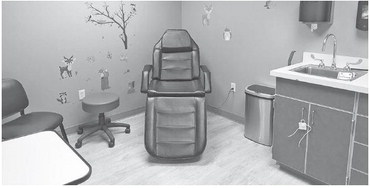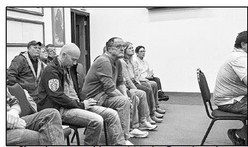Rural road safety is a two-way street: Five tips every driver needs to know this spring
As spring arrives and fields across Wisconsin come to life, farmers are hitting the road with tractors and planting equipment in tow. With planting season underway, the Wisconsin Farm Bureau is urging both farmers and drivers to prioritize safety on rural roads.
Sharing the road with large agricultural machinery can be challenging, especially during the busy spring months. It is crucial that farmers and drivers work together to keep roads safe for everyone.
“Everyone is busy, especially during the spring season,” said Wisconsin Farm Bureau President Brad Olson. “It’s easy to get impatient, but we all share the road and the goal of making it home safe to our families. A little patience and awareness can be lifesaving.”
Here are five tips to help ensure rural road safety this spring: 1. Drive Smart — Follow safe driving practices at all times. It’s illegal to pass Implements of Husbandry (IOH), such as farm tractors and machinery, or Agricultural Commercial Motor Vehicles (Ag CMVs) in no-passing zones.
Motorists should wait to pass a slow-moving vehicle until they have safely entered a passing zone. Farmers should not pull over in a no-passing zone to let vehicles pass unless the road shoulder condition and width can allow for the farm machinery to completely move onto the shoulder.
Farmers also should not wave a driver forward to pass. While these actions seem courteous, they send mixed signals and are not encouraged. In a passing zone, or if the shoulder width permits, farmers are obligated to yield the roadway to an overtaking vehicle so they do not impede the normal movement of traffic.
2. Stay Alert — Stay alert while driving, as you never know when you’ll meet farm equipment on the road.
The Wisconsin Department of Transportation recommends that motorists slow down immediately whenever they see a slow-moving vehicle emblem (a bright orange and red triangle) on the rear of a tractor or other piece of equipment. This emblem indicates that the farm machine usually travels slower than 25 mph. If you see it, reduce speed and prepare to adjust your driving. Be especially cautious when approaching hills, curves or intersections. Stay alert, focused and patient when passing a slow-moving agricultural vehicle in an area where passing is legal.
3. Watch for Field Turns —Watch out for unexpected turns into field driveways, as it is more likely for farm equipment to turn there than at an intersection. It can turn into a dangerous situation when a farmer is attempting to make a left-hand turn. Farm equipment, especially the tractor, will have two flashing amber or yellow lights on the cab or tire fenders of the tractor when on the roadway. When a farmer signals to turn, the light will continue to flash in the direction the farmer is turning. The other light will go solid.
Farmers are asked to comply with the proper lighting and marking requirements to draw attention to the size, shape and speed of agricultural vehicles and to alert motorists that caution is required. There are specific requirements for different types of equipment.
4. Give Space — Farm equipment is heavy and takes longer to stop. Don’t pass near intersections and always give large machinery plenty of space when following or passing. Ensuring there is a safe distance between you and the equipment gives farmers the time they need to react and brake properly.
5. Don’t Assume Visibility — Just because you can see the farmer doesn’t mean they can see you. Large equipment has significant blind spots, especially when backing up or making tight turns. Be patient and avoid risky maneuvers around equipment.
“Safe roads are critical, not just for our farmers but for the health and strength of our rural communities,” Olson added. “It’s about more than traffic. It’s about mutual respect, shared responsibility and ensuring safe travels for everyone who uses rural roads.”
Let’s work together to make this planting season a safe one.




